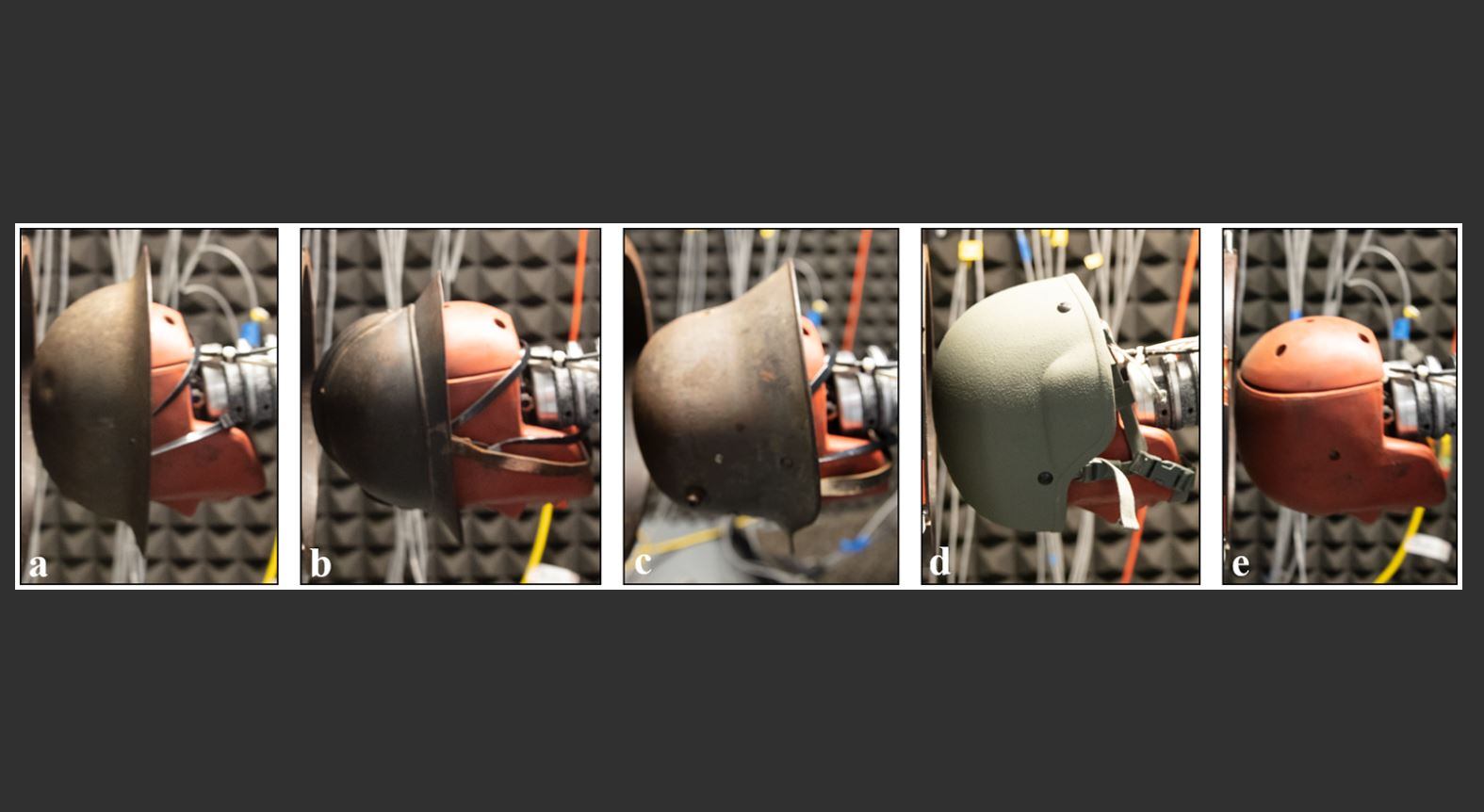Any helmet is still better than no helmet, but at least one World War I-era brain bucket designed by France is better than your modern design in protecting against overhead blasts, according to a research paper published by biomedical engineers at Duke University this month.
The lesson, researchers said, is that more studies on simple materiel or design tweaks, like a crest atop the helmet or a wider brim, could curtail mild blast-induced brain trauma among troops.
The study compared the protective effect of historical and current combat helmets, as well as the impact of a bare head with no helmet, against shock waves. Researchers placed helmets on crash test dummies’ heads and necks and lined up a shock tube that simulated a blast over the crown of the head. Various shock waves replicating historical artillery shells were then generated.
The French Adrian helmet, developed in 1915, had the lowest risk for moderate brain bleeding — even less than contemporary American helmets. But all helmets provided a five-to-tenfold reduction in risk for moderate brain bleeding, according to a university news release.
“The result is intriguing because the French helmet was manufactured using similar materials as its German and British counterparts, and even had a thinner wall,” Joost Op ‘t Eynde, a biomedical engineering doctoral candidate at Duke, said in the release. “The main difference is that the French helmet had a crest on top of its crown. While it was designed to deflect shrapnel, this feature might also be deflecting shock waves.”
Helmets tested also included the American and British Brodie design, the German Stahlhelm and the U.S. military’s Advanced Combat Helmet, which came into use in the mid-2000s. The study didn’t look at the Ops-Core high-cut style helmet worn by special operations forces, though.

Blast trauma has never been a key concern of helmet design, according to the Duke study. Many early helmets were made to protect against shrapnel on the rapidly industrializing battlefields of early 20th century Europe. And even though modern variants prioritize protecting troops’ brains from ballistic and blunt trauma, the shock wave isn’t the key focus.
“No current fielded helmet system has been specifically designed for blast protection, though careful studies suggest that modern helmets have a degree of blast protective effects,” the Duke researchers wrote.
When an artillery round explodes, it releases a shock wave that is known as the “primary blast.” The projectiles that launch from the explosion are the “secondary blast.”
“Only in recent years has the threat of direct blast wave impingement on the head — separate from penetrating trauma — been appreciated,” researchers added.
Soldiers exposed to artillery barrages in the trenches of World War I would often be sent to field hospitals where medical practitioners could find no obvious sings of external trauma.
The term “shell shock” was coined to describe a slew of symptoms doctors observed among soldiers at the time, according to the study. But the issue is largely understood today to have been a combination of traumatic brain injuries and psychological distress.
The Duke researchers noted that in the many conflicts the U.S. military engaged since World War I, there has been a growing trend of casualties caused by explosions.
The researchers cited other studies, which showed that 78 percent of all injuries in the Iraq War between 2001 and 2005 were the result of explosions. And a 2012 study published in the American Journal of Preventative Medicine found that during the Iraq and Afghanistan conflicts, more than 65 percent of TBIs were associated with an explosion.
Kyle Rempfer was an editor and reporter who has covered combat operations, criminal cases, foreign military assistance and training accidents. Before entering journalism, Kyle served in U.S. Air Force Special Tactics and deployed in 2014 to Paktika Province, Afghanistan, and Baghdad, Iraq.





